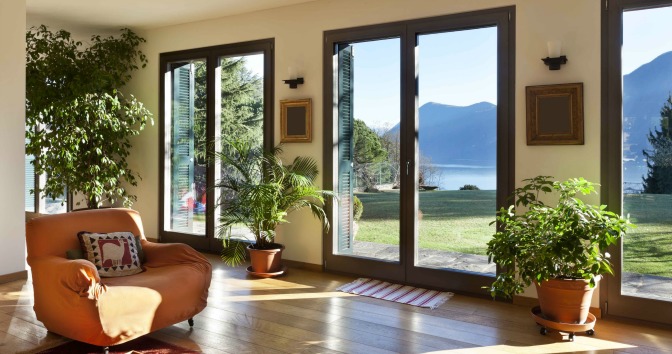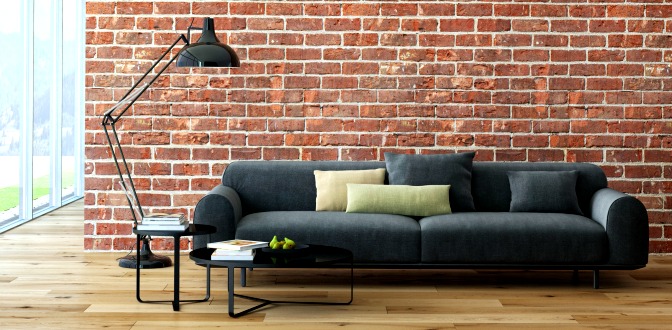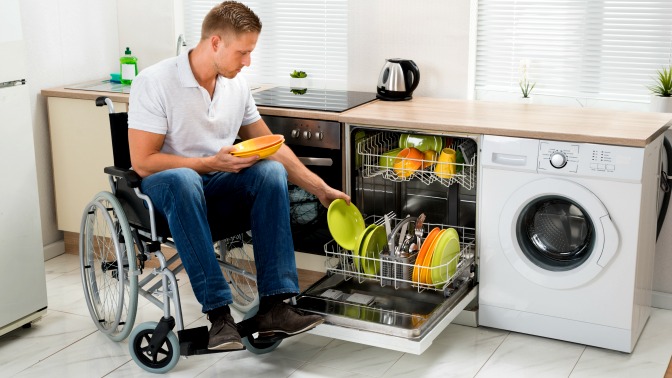As a design professional, you undoubtedly believe that every person deserves a beautiful home that meets all of their needs and expresses their unique personality. For clients with specific accessibility needs, that means additional considerations to keep in mind.
With a bit of research and open conversation, you can create spaces that are both beautiful and functional. Designing for people who are aging in place or who have accessibility requirements is no different than working with any other client—it’s all about figuring out their wants and needs, and the best way to provide for those! While you will figure out what exact specifications are necessary by consulting with your client, here are some general considerations to keep in mind when you’re designing accessible spaces.
Lighting
Light automation is a great tool for any client, especially those with accessibility requirements. Groups of lights can be turned on or off from one switch, eliminating the need to travel around the house to shut lights off before bed, or risk running into furniture searching for switches in the dark. There are also apps, gadgets, and remotes available that allow you to control lights, temperature, and even window coverings right on your phone or at the touch of a nearby button, eliminating the need to roam around the house making adjustments!

For clients who aren’t able to get outdoors as often as they like, natural lighting will make a big difference in enjoying their indoor space. Avoid heavy curtains—instead, large windows with semi-sheer drapes will give your client some privacy while still letting in lots of sunshine. Potted plants will keep air feeling fresh, while providing beautiful décor accents.
Flooring
If clients are replacing floors, try to avoid any lips or raised borders. Keep transitions between types of flooring even so that anyone with mobility challenges can easily move from one room to the next. Likewise, try to avoid thick carpets or rugs as these make it very difficult for anyone in a wheelchair to maneuver. Hard flooring is the ideal choice, and if clients would like to add accent rugs, then flat woven options are your best bet.
Fixtures
When selecting door knobs, faucets, and handles, make sure you’re choosing designs that can be used by someone with limited dexterity.
Pro tip: A good test is to see if a fixture can be manipulated with a closed fist. If it can, then you’re good to go! If not, consider a different option.
Furniture and Space Planning

A cluttered room isn’t a great look for any home, but this is especially true if your client has accessibility needs. Design accessible spaces by keeping furniture to a minimum and arranging pieces around the edges of the room. Having a more open floorplan allows clients lots of space to move around, and reduces the risk of them bumping in to anything. You may also want to consider rounded tables rather than squares or rectangles to allow for easy, smooth and painless movements. You should also try to help your client find furniture that is the most convenient height for them. Try placing lamps directly by couches or chairs, both for extra light and to avoid your clients having to go flip the switch when the sun goes down.
Kitchens and Bathrooms
For clients with accessibility needs who would like to renovate kitchens or bathrooms, make sure you consider what types of counters to install. Someone in a wheel chair would have a tough time working with standard counter heights, while a client with vision challenges may appreciate rounded corners. Roll-under counter tops and sinks at the appropriate height are definitely something to consider for larger-scale renos, as are raised dishwashers.
Walk-in showers are a great option for convenient bathing, as are multi-height or removable shower heads. Accessories in the bathroom should only be used when they don’t impede someone’s ability to move around the space. Instead, dress up the room by using fun colors, and hang pieces of art on the walls where they’re out of the way.

As a design professional, you know you can create beautiful spaces that your clients will love long term, and that meet all of their needs. You certainly don’t need to skimp on style in favor of function; finding the perfect blend between the two is not just doable, it’s also a ton of fun!
The principles of Universal Design aim to make spaces accessible for everyone, and they can easily be applied to any home. Even if your clients don’t currently require some of the accessibility features you may incorporate, there’s no harm in following general accessibility guidelines. This way your clients’ home will be accessible to all, not just themselves.
Universal Design also increases re-sale value, and is excellent to consider for clients who plan to stay in their home long term: aging creates accessibility requirements as well! Many features for achieving Universal Design are the responsibility of architects or contractors, but there are still some changes that can be suggested by anyone in the design industry.


